“Ignorance is like a delicate exotic fruit; touch it, and the bloom is gone.”
Oscar Wilde
Educational software has to be fun. If it doesn’t engage kids, it doesn’t matter how much educational content it has. Anything that engages kids—that earns their time and energy by returning satisfaction—can be turned to educational advantage.
“You mean like girls?”
Teaching is hard. It requires patience, understanding, empathy, and compassion. And it requires deep insight into both how children learn and how to make the process engaging. Thus great teachers are rare and the demand for them is high. To solve our urgent education needs, technology is being used to compensate for perceived educational inadequacies and to augment the offerings of existing institutions.
Study depends on the goodwill of the student, a quality that cannot be secured by compulsion.
Marcus Fabius Quintilianus, 85 A.D.
When used well, we believe computers can help children learn in an effective and enjoyable way. But it’s not the hardware that’s going to do that. It’s a combination of the quality of the people who create and present the instructional materials and the manner these materials are integrated into the classroom. It’s the content—not the machine. And like all educational content, a computer program can either disappoint with boring drudgery, or it can inspire a thirst for knowledge and fulfill the promise of technology which makes learning interesting and accessible.
In children’s software, educational and entertaining are two sides of the same coin.
While there are many cognitive and psychological principles that we embrace, there are a few that have become the pillars of our work in this area. These are:
-
Learning should be fun. It should invoke a sense of joy and wonder and make people happy while they’re learning. To be effective, it must be engaging.
-
Learning should be authentic. An Authentic Activity has an external meaning that students can understand and embrace. If an activity has no purpose other than to get a passing grade, what is learned will be quickly forgotten.
-
People perceive and learn things differently. These differences should be recognized and supported, particularly in computer software which can accommodate and adapt to them.
-
Learners should be given freedom and control over what they’re learning to the extent possible. The ability to make a discovery and construct personal meaning is empowering. It makes the subject matter relevant and it encourages studying, developing a life-long thirst for knowledge.
-
Educational projects should support novice learners and allow them to act beyond their current level of ability. As novices become experts, the “scaffolds” should gracefully fall away and not interfere with students’ growing expertise.
We recommend that any educational project rely heavily on these five principles.

The Kids Online Network was an ambitious project requiring a large number of technical and graphical assets combined with educational theory. Designed for pre-reading children, this hybrid CD-Rom and Internet product posed a complex educational design challenge.
Case Study: The “Field Trips” Series
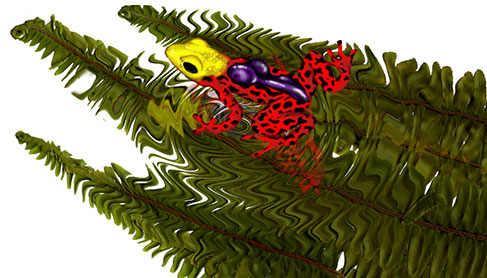
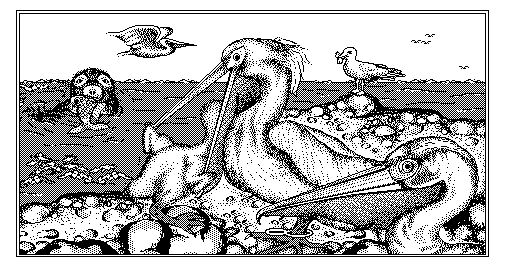
Olga Werby’s lush illustrations pushed the primitive 1-bit display technology used by computers when the program was first released. The displays were only capable of rendering either solid black or pure white pixels. Grays are achieved by dithering between the black and white pixels.
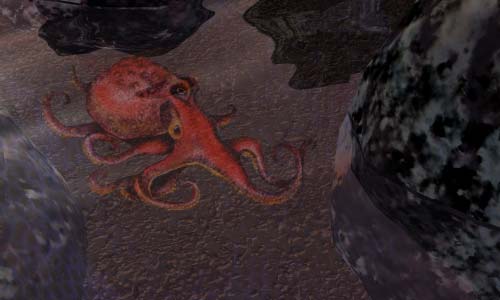 Commercially released in 1990, “A Field Trip into the Rainforest” and “A Field Trip into the Sea” were the progenitors of a whole genre of children’s educational software. Since then, hundreds of titles have been released based on this concept. Kids are invited to explore the flora and fauna of different ecosystems and make connections between the living things found there, using a hypergraphic database approach—which we believe to be the first of its kind. The Field Trip series has been a substantial hit for
Sunburst Communications, winning numerous awards. Since its release, it has been continually updated and is still a big seller.
Commercially released in 1990, “A Field Trip into the Rainforest” and “A Field Trip into the Sea” were the progenitors of a whole genre of children’s educational software. Since then, hundreds of titles have been released based on this concept. Kids are invited to explore the flora and fauna of different ecosystems and make connections between the living things found there, using a hypergraphic database approach—which we believe to be the first of its kind. The Field Trip series has been a substantial hit for
Sunburst Communications, winning numerous awards. Since its release, it has been continually updated and is still a big seller.
Case Study: Knowledge Universe
Knowledge Universe embarked on an ambitious project to deliver online educational content tailored to the learning styles of each student. They needed to be able to serve, in a browser, a large collection of non-customized content derived from a variety of other sources. But they needed to provide consistent navigation options and branding. Pipsqueak designed an interface for this project which, in part, floats over the pages of educational content and allows students to easily annotate the page or navigate the system.
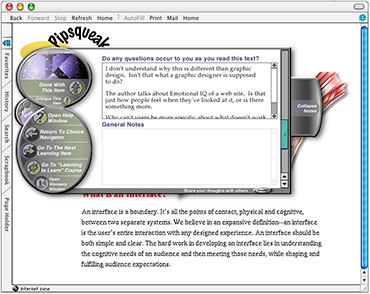
This floating interface element solved a tricky problem where consistent user interaction was needed over a wide variety of webpages from various sources.
Case Study: Spectrum Lightbox Exhibit
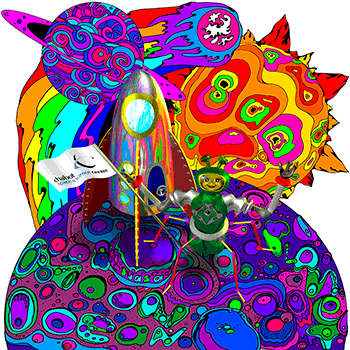
This color sculpture contains hidden words which become visible when viewed with colored filters.
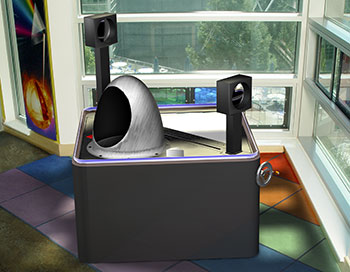
Pre-fabrication visualization of the exhibit in situ.
Chabot Space and Science Center asked Pipsqueak to design a kid-friendly spectrum and lightbox station. It was located in a corner alcove between two sun-lit windows. Pipsqueak designed a multi-station activity cube with light table, built-in telescope, and an embedded hood with both laser and white light sources modified by a prism. We also created a similarly themed mural for the adjacent wall panel, and a color sculpture which has hidden messages which become clear when viewed through colored filters. All design projects have constraints. The particular issues of usability by a young audience, ruggedness, safety, and size made this a particularly interesting design challenge.
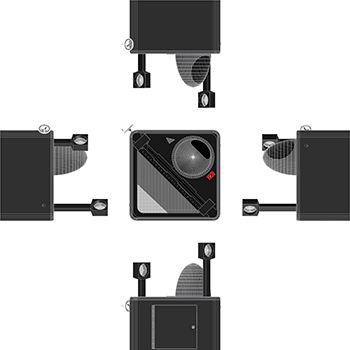

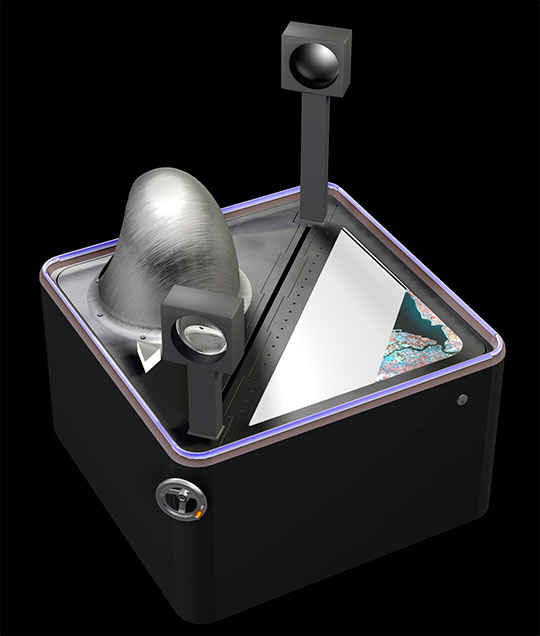
Case Study: Patterns of Nature
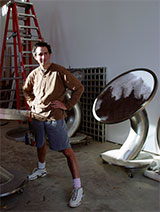
Ned Kahn creates museum exhibits that visualize forces of nature. We’re big fans of his work.
This project was created to accompany a set of exhibits demonstrating natural forces created by the wonderful Ned Kahn. A particular challenge was creating educational materials that served kids from 6 through 18 years of age. The solution included a large set of photo cards for all ages together with different sets of grade-specific instruction sheets featuring age appropriate card activities designed to use the photo cards.
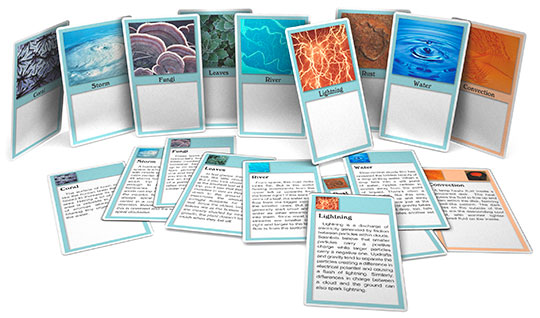
Case Study: Dinosauria Game

 Dinosauria is a mathematical logic game developed for middle school students.
A set of environment cards are shuffled and dealt as a grid. Then players try to place dinosaur pieces onto the grid, following the logic table rules for each dinosaur and grid square. For example, an environment grid piece might say, “only one carnivore on this space” while a dinosaur rule might be, “no more than one space from water.” Each dinosaur has several rules associated with it, and players get extra points for dinosaurs with complex sets of rules. Each time a dinosaur is placed into Dinosauria, the game becomes more difficult—the set of potentially conflicting rules increases. In order to place a large number of dinosaurs, the player needs to use strategy—is it better to place lots of little plant-eating dinosaurs or one big meat-eater? Variations allow for user manipulation of the environmental grid as well. While fun to play, Dinosauria is specifically designed to teach the standard logical operators (And, Or, Not), introductory set theory, and logical thinking skills.
Dinosauria is a mathematical logic game developed for middle school students.
A set of environment cards are shuffled and dealt as a grid. Then players try to place dinosaur pieces onto the grid, following the logic table rules for each dinosaur and grid square. For example, an environment grid piece might say, “only one carnivore on this space” while a dinosaur rule might be, “no more than one space from water.” Each dinosaur has several rules associated with it, and players get extra points for dinosaurs with complex sets of rules. Each time a dinosaur is placed into Dinosauria, the game becomes more difficult—the set of potentially conflicting rules increases. In order to place a large number of dinosaurs, the player needs to use strategy—is it better to place lots of little plant-eating dinosaurs or one big meat-eater? Variations allow for user manipulation of the environmental grid as well. While fun to play, Dinosauria is specifically designed to teach the standard logical operators (And, Or, Not), introductory set theory, and logical thinking skills.


